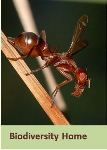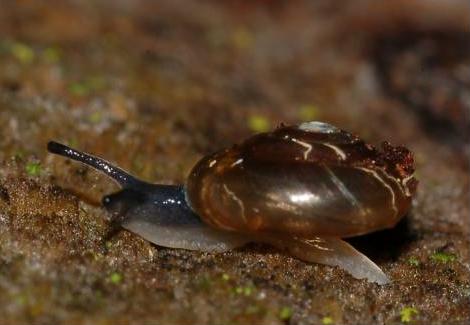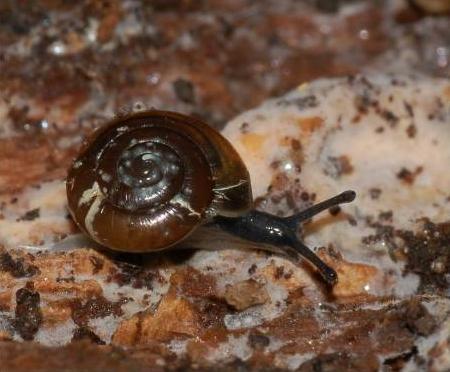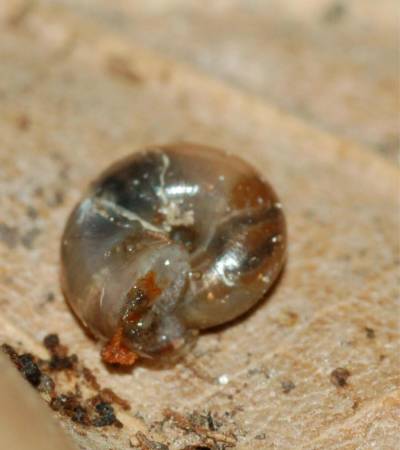 |
|
This is a very
common snail and widespread snail. Turn over a piece of
firewood that is resting on the ground and you are likely to find
it. It is often found under loose bark. Dead elm trees are a
great spot to find them. I have also found them underneath the
plastic sleeves used to protect newly planted trees.
This is a pretty
distinctive small (5 mm diameter) snail. It has a smooth dark brown
shell with no reflected lip. It has an open umbilicus. Perhaps
the most distinctive characteristic, however, is the two-toned nature of
the snail itself. The upper part is a dark gray color, and the lower
part including the base of the foot is very pale, almost white.
|

|
|
|
|

|
I have seen some
photos of other snails that have a distinct two-tone look, but certainly
none of them are as common as this one or look quite like it.
This
snail is apparently one that can be numerous enough to be a crop pest. Hubricht's
distribution map for this species shows it in the southernmost counties of
Florida, Texas, and California, and the northernmost parts of Maine,
Michigan, Minnesota, and Washington State. His map shows it recorded
in about 1/4 of Iowa, including primarily eastern and northeastern
Iowa. I believe this snail is likely to be present in all counties
of Iowa and that the distribution map is more a reflection of where Iowa's
snails have been surveyed and collected rather than where this snail is
found.
|
|
|
|
Of the three Zonitoides species in Iowa, Z.
limatulus has a more sculpted surface, and Z. nitidus is
slightly larger and has a more rounded aperture. The
photograph to the right shows the open umbilicus.
|

|